I've been using Google's wildly underrated AI-powered research assistant, NotebookLM, long before most people even knew it existed. I tried it out when Google launched it as an experimental Google Labs project under the code name Project Tailwind. Even though it didn't offer the Audio Overviews feature, which I believe is responsible for how popular it's become now, it still felt like a powerful tool with immense potential from the start.
Now, here's the thing about me: I'm terrified of change, and when I find something I like, I cling to it with a death grip. So once NotebookLM became part of my workflow (and changed it for the better), I wasn't about to let it go. I recently realized that though NotebookLM is an excellent tool on its own, pairing it with the right tools takes it to a whole new level. So, here are 3 productivity tools I've been pairing NotebookLM with lately to boost my workflow.
3 Perplexity
Let Perplexity do the digging
An AI tool I've been using a lot lately is Perplexity, which can essentially search the internet in real time and gather information and research from authoritative sources. By the description alone, you can probably tell that while the "research" element exists in both NotebookLM and Perplexity, the list of similarities between the two pretty much ends there.
Unlike Perplexity, NotebookLM is primarily meant to enhance how you work with sources you upload to a notebook. So, the tool is essentially useful once you've already gathered your information and simply need better ways to interact with and make sense of it.
Though I typically add sources like my lecture slides to my NotebookLM notebooks, there are times when I want to supplement my notebooks with external sources, especially more recent findings. That's where Perplexity comes into play. For instance, say I have a notebook for my world history class and I want to find recent studies or news articles that offer updated perspectives on a certain historical event. Instead of manually searching for these sources, I simply type a prompt in Perplexity, and the Sources tab will have a list of links I can add to my notebook.
In cases where Perplexity finds a lot of sources and manually adding them to my notebooks isn’t something I particularly want to do, I can simply use a Google Chrome extension to automate the process. Once the sources are in a new (or existing) NotebookLM notebook, I treat it just like a regular notebook with sources I curated myself. The only difference here is that I'm not entirely familiar with the content of each source yet.
Thankfully, NotebookLM makes overcoming this obstacle extremely simple. All I need to do is ask it to summarize the source, and I can quickly get up to speed. I can also interact with the sources by creating Audio Overviews, Mind Maps, Briefing Docs, Study Guides, and more.
Since NotebookLM is source-grounded, I can also ask the AI questions about the sources and get information directly from my materials with minimal to no hallucination. It only references existing material and doesn’t search the web to answer my queries, so I don’t need to worry about it fabricating false answers just to please me.
The tools are both designed to enhance the research process, but serve entirely different purposes. Despite that, they work seamlessly together, and pairing them up is hands-down one of the smartest decisions I’ve ever made.
2 Gemini
Let Deep Research do its thing
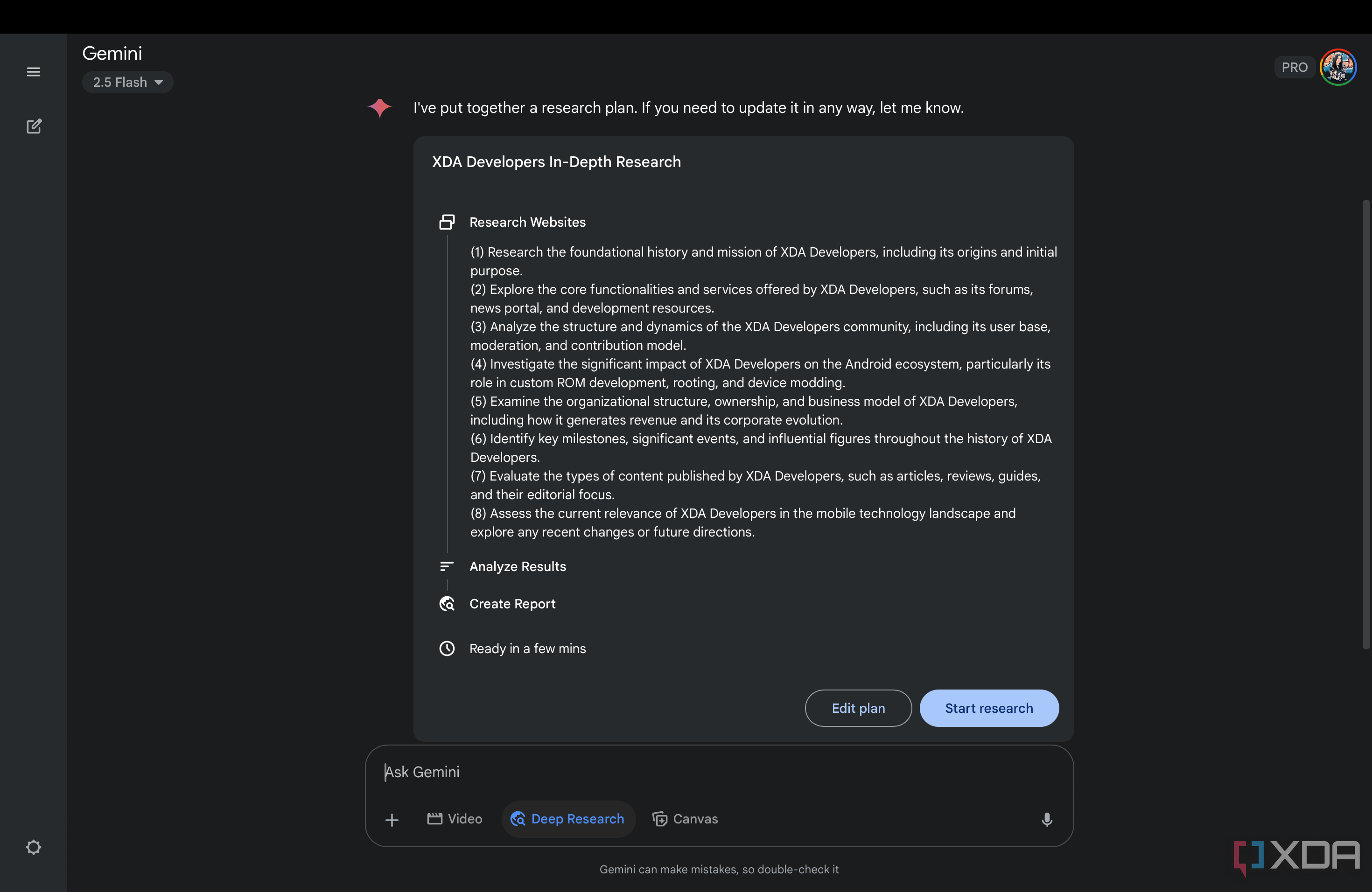
Now, pairing Gemini with NotebookLM might sound strange… since NotebookLM is powered by Gemini. But hear me out. The Gemini interface (both the website and mobile app) has this incredibly powerful tool called Deep Research. What the feature does is research a topic you've provided… deeply.
Unlike an AI chatbot that takes seconds to spit out an answer to a query you asked, Gemini's Deep Research feature begins by formulating a plan on what approach it'll take to research your topic, and then starts the research process. During it, Gemini analyzes hundreds of websites, including community forums like Reddit and even YouTube videos. I'm not exaggerating when I say hundreds here. When I asked Gemini to use Deep Research to conduct research about XDA, it analyzed 104 websites.
Given the amount of research the tool conducts, one thing’s for certain: the final report it'll formulate won’t be shallow or a quick read. At times when I don't want to read through Gemini's Deep Research findings, I simply convert it into a Google Docs document and drop it into a NotebookLM notebook. I then listen to an Audio Overview of it.
Gemini’s Deep Research report ensures I have a thorough and well-rounded understanding of the topic, and NotebookLM helps me engage with that research in a way that actually sticks.
Though Gemini lets you convert Deep Research reports into Audio Overviews right within the interface, I usually do that when I just want a quick overview of the topic. When I want a more in-depth and complete overview, I resort to NotebookLM, especially now that you have more control over the length of the audio summary.
1 Quizlet
No more blank stares at definitions
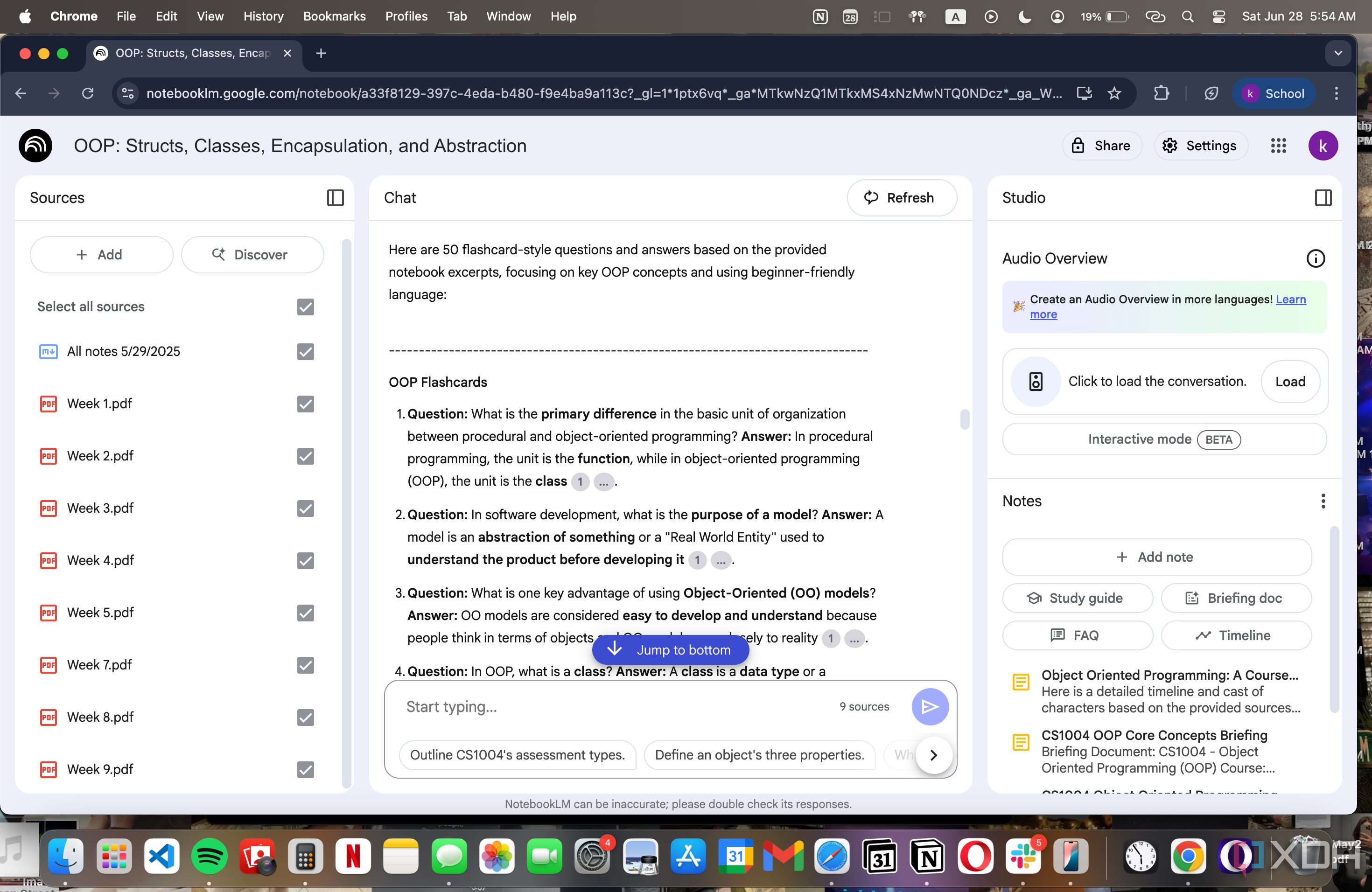
Though NotebookLM is filled with features that have transformed how I study, one thing it's yet to fully fix is my goldfish of a memory. I really struggle when it comes to committing information to memory, and typically forget anything I've memorized seconds later. I still rely on flashcards for memory-heavy courses, and Quizlet's my go-to website for that.
I've been relying on it since grade school, and it's home to flashcards I've spent hours on end creating manually. Lately though, I’ve been pairing Quizlet with NotebookLM in ways that make using both tools easier. For flashcards I’ve already made, I just copy them into a NotebookLM notebook so I can understand them better and actually ask the AI questions about the terms instead of just mindlessly flipping through them.
On days when I'm learning something new in a memory-heavy course and don't want to spend hours making flashcards from scratch, I let NotebookLM do the heavy lifting for me. I add all my study materials into a NotebookLM notebook, and then prompt it to generate quiz-style questions and answers straight from my sources. For instance, here's a prompt I used:
Can you generate 50 flashcard-style questions and answers based on this notebook? Keep them short and focused. Use clear, beginner-friendly language, and cover key OOP concepts like classes, objects, inheritance, polymorphism, encapsulation, and abstraction.
Thanks to NotebookLM's source-grounded nature, the questions it generates are always tied directly to my materials, so I know I'm not memorizing made-up or irrelevant info. Once I’ve got a solid set of Q&As, I just copy them into Quizlet and use them like any other flashcard set. It’s a massive time-saver, and honestly makes the whole study process feel a lot less overwhelming.
Boost your workflow by pairing NotebookLM with other favorites
Of course, the tools I've mentioned above aren't the only ones you can use together with NotebookLM. Some pair NotebookLM with Obsidian, while others might even combine it with ChatGPT or Meta AI. At the end of the day, it all comes down to personal preference and finding a combo that works best for you.
.png)
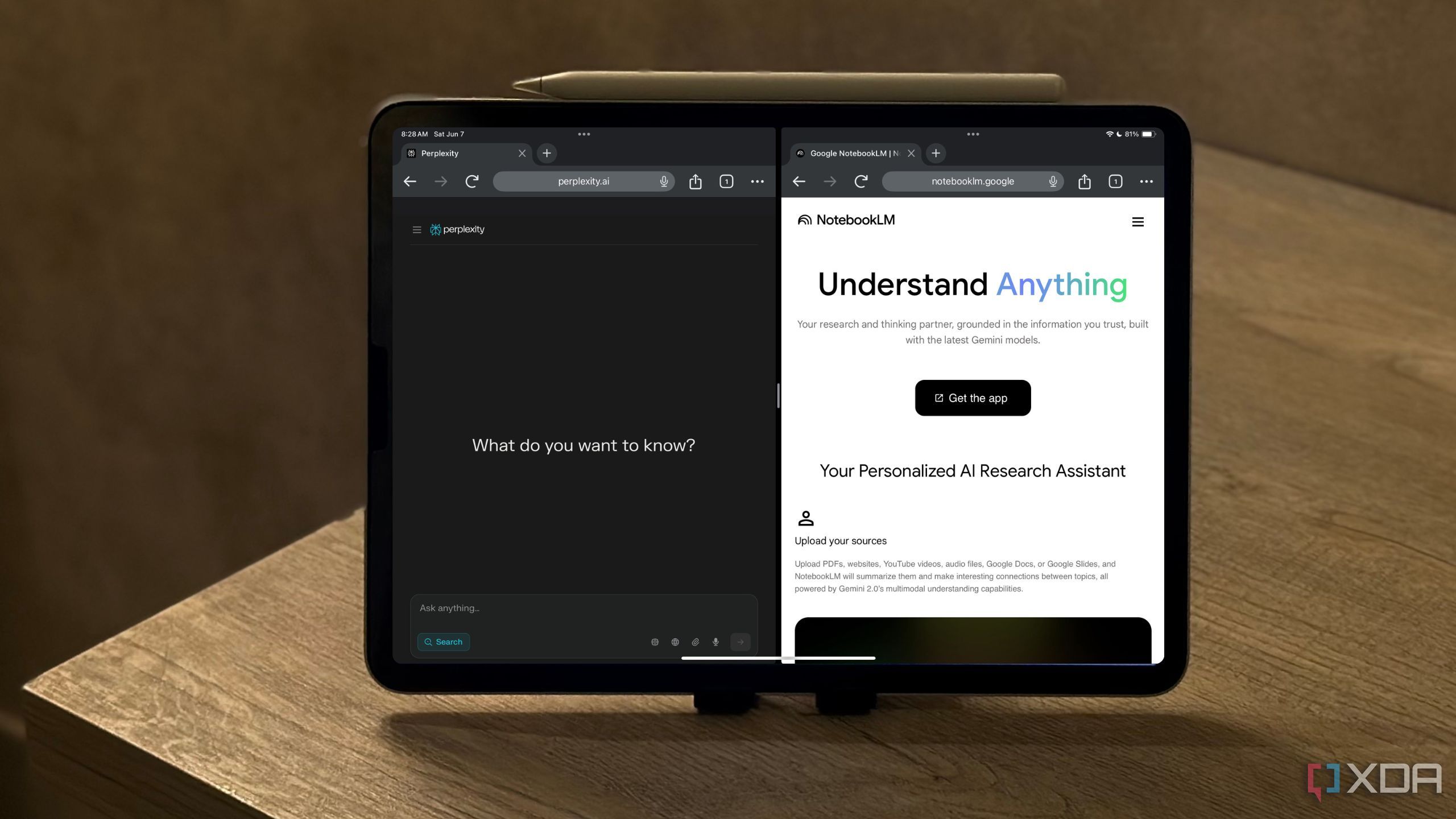
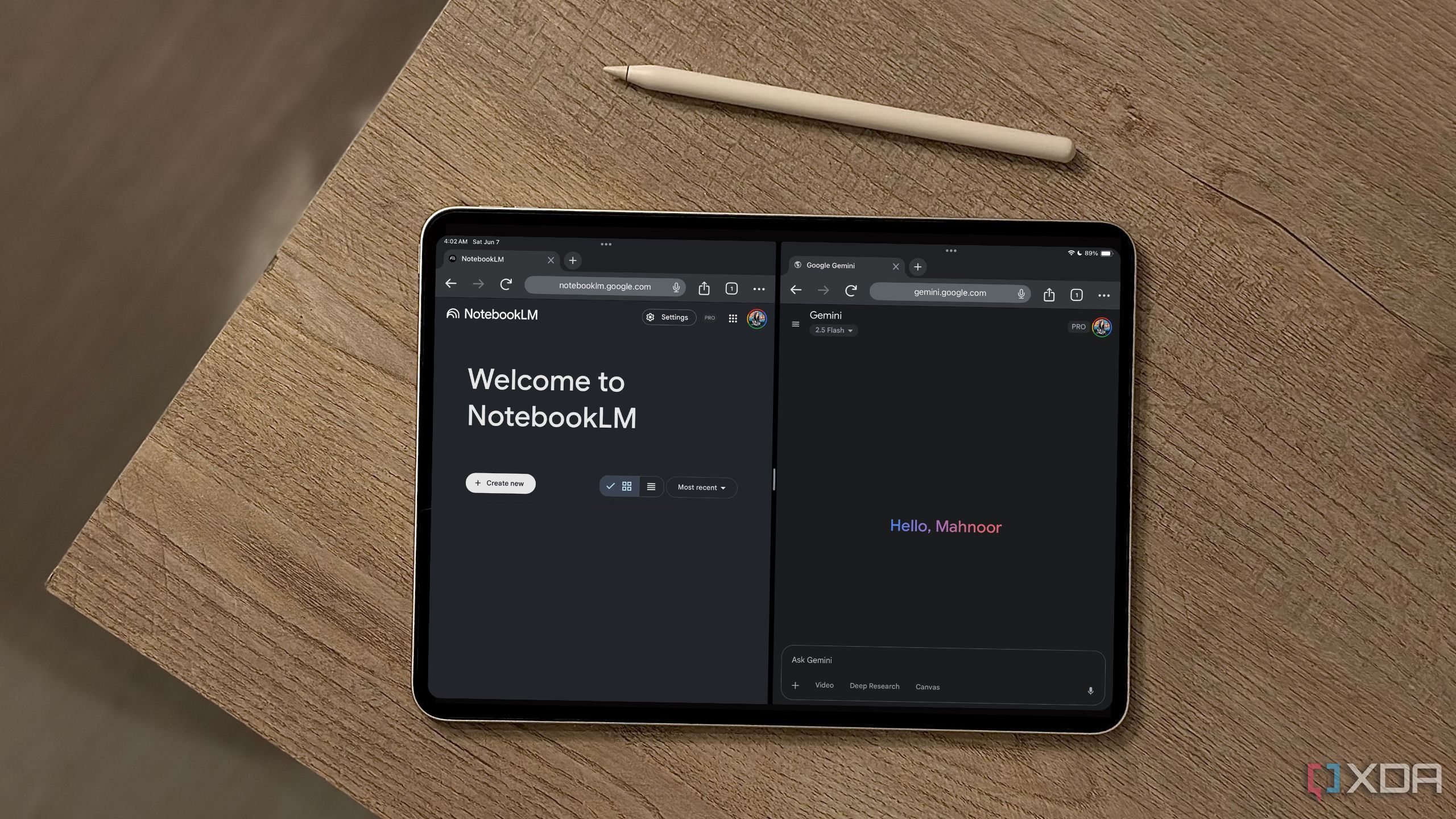
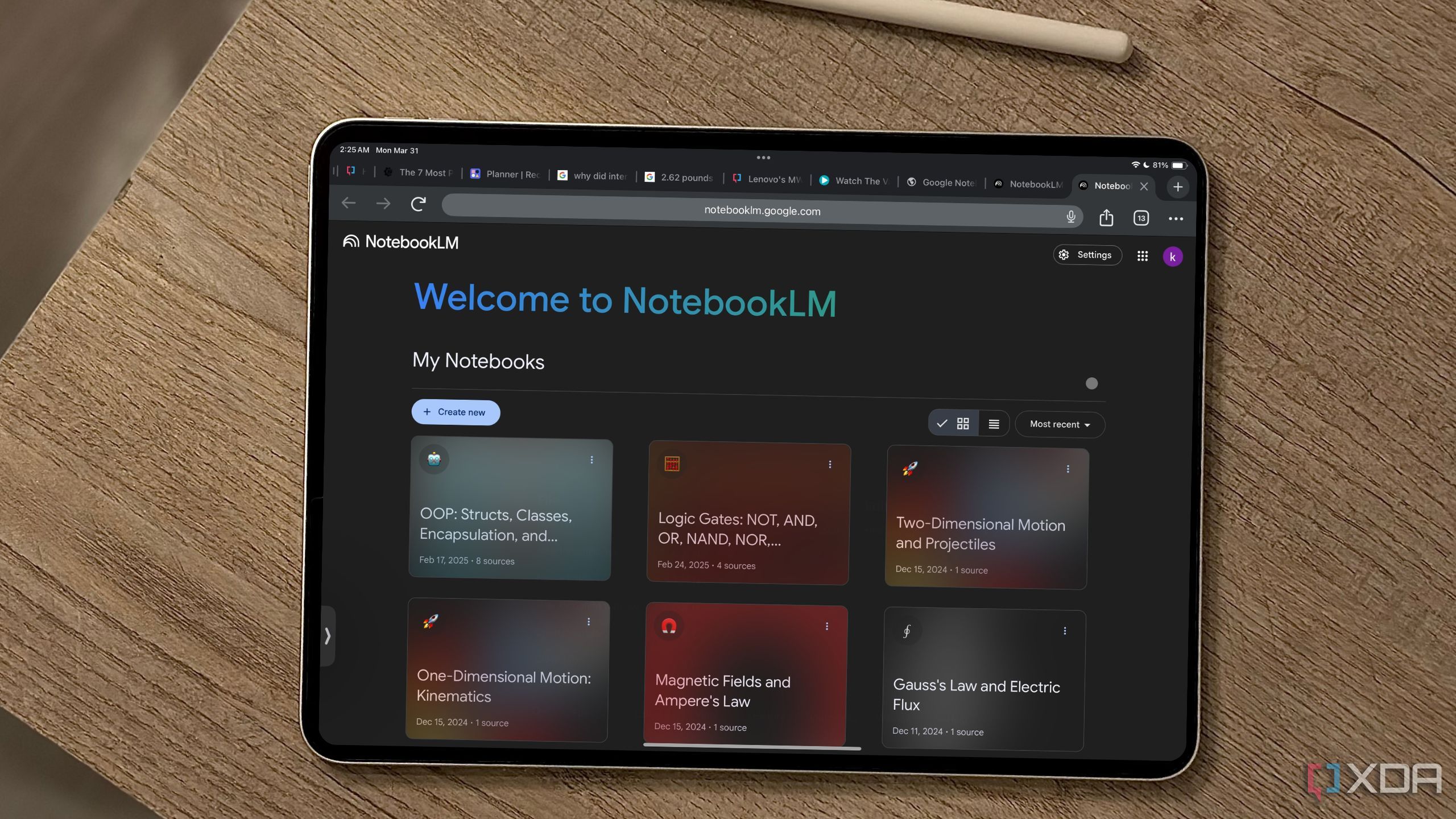
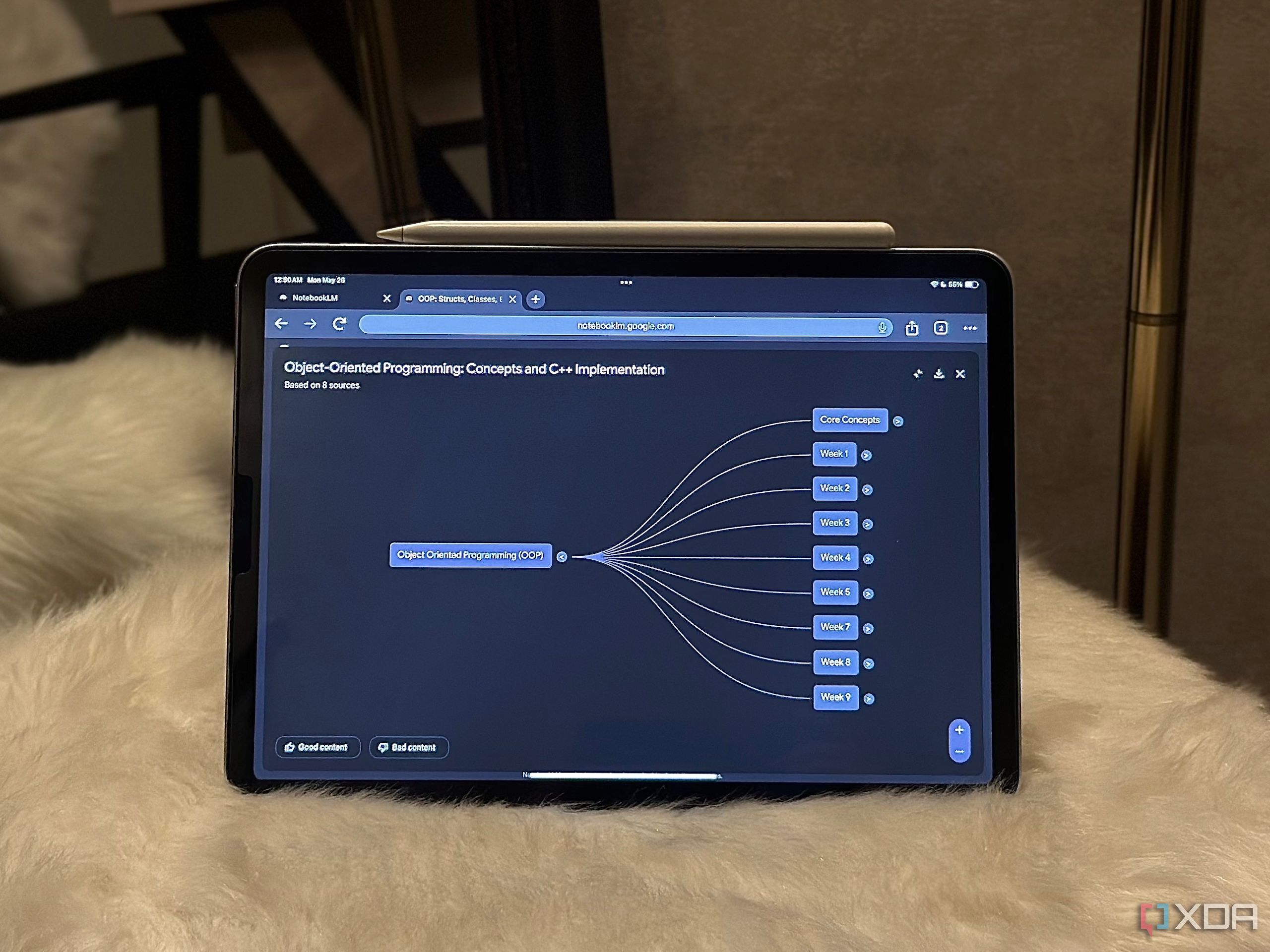











 English (US) ·
English (US) ·